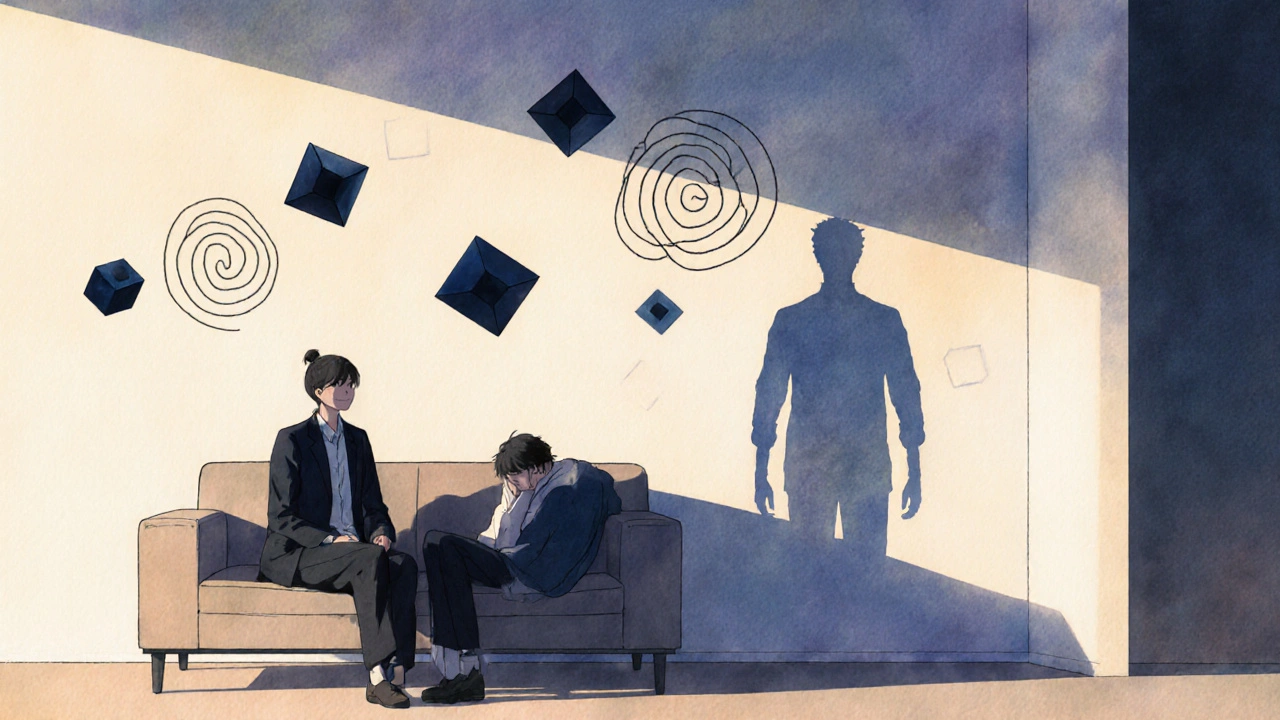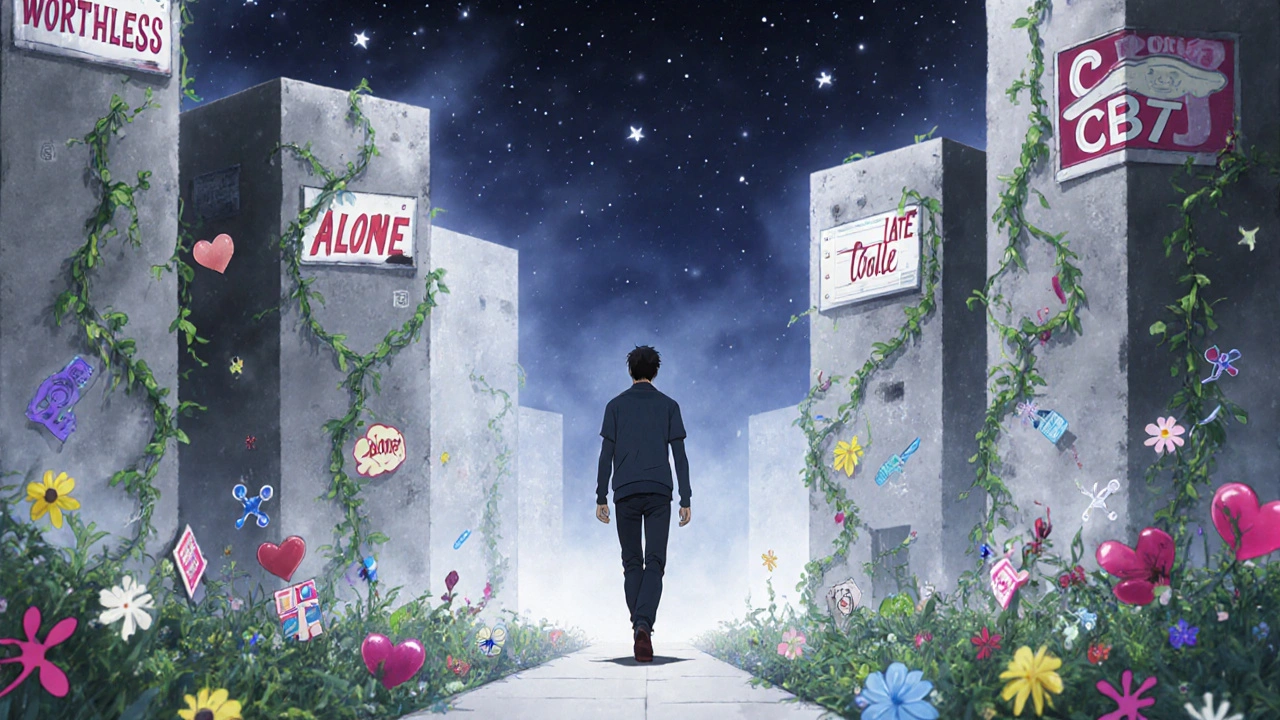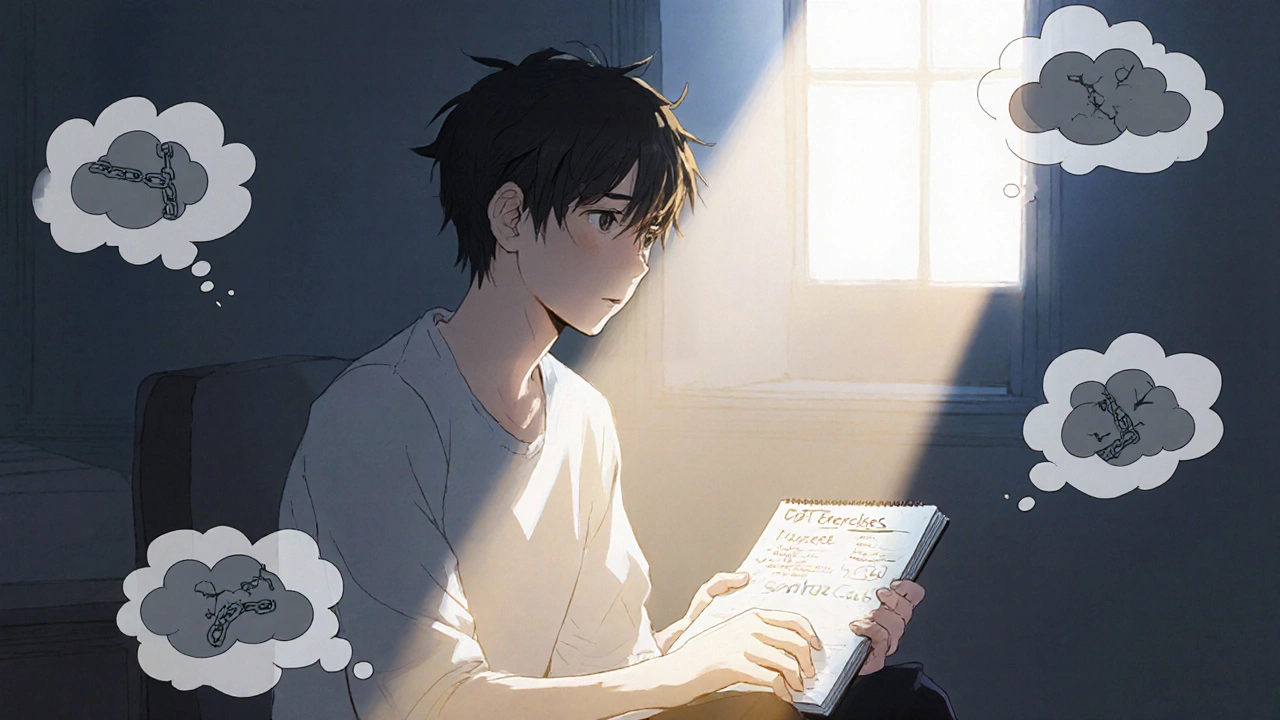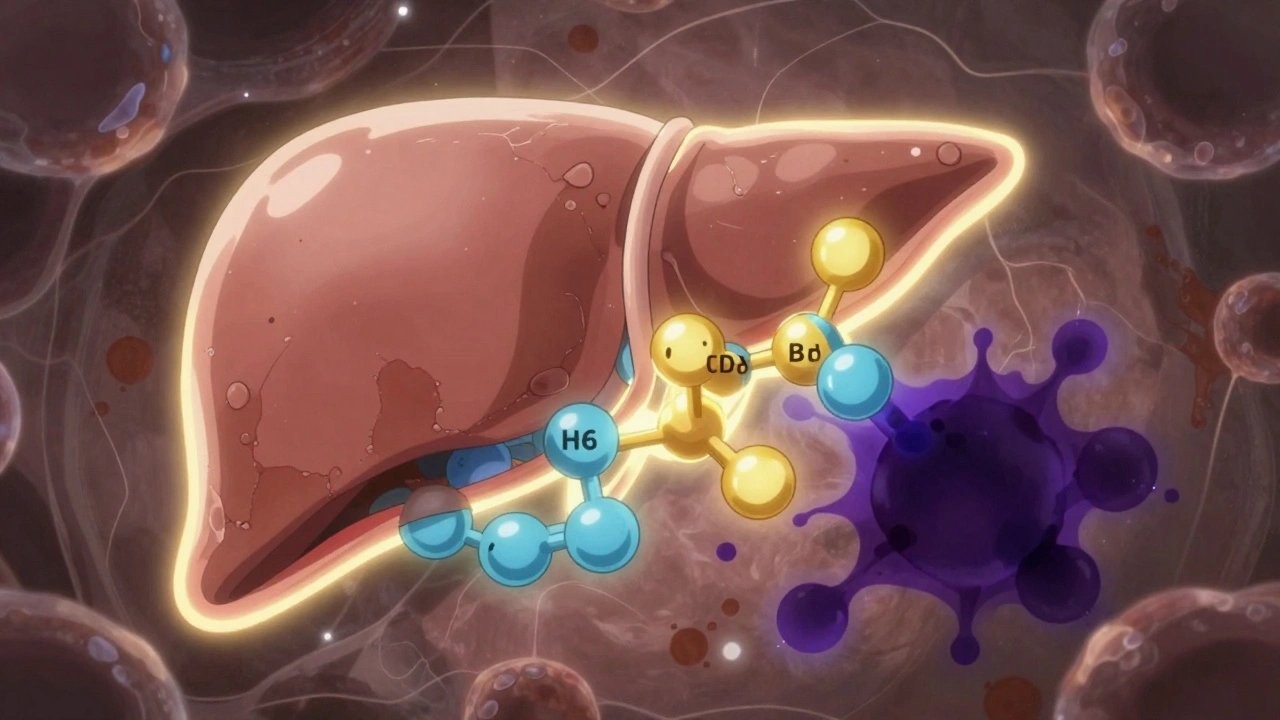If you’ve been feeling stuck in a fog for weeks - no joy in things you used to love, constant fatigue, or just a heavy weight on your chest - you’re not alone. About 15.5% of U.S. adults experience Major Depressive Disorder (MDD) every year, according to the National Alliance on Mental Illness. It’s not just sadness. It’s a medical condition that changes how your brain works. And the good news? There are real, proven ways to get better. Two of the most effective tools? Antidepressants and psychotherapy. But which one is right for you? And do they work better together?
What Exactly Is Major Depressive Disorder?
Major Depressive Disorder isn’t just having a bad week. It’s a persistent low mood, loss of interest in life, and physical symptoms like trouble sleeping, changes in appetite, or feeling drained even after rest. These symptoms last at least two weeks and interfere with work, relationships, or daily tasks. It doesn’t always follow a big life event. Sometimes, it just shows up. That’s because MDD isn’t caused by one thing - it’s a mix of brain chemistry, genetics, life stress, and even physical health issues.Psychotherapy: Talking Your Way Out of the Dark
Psychotherapy isn’t just venting. It’s structured, evidence-based work with a trained therapist. The most researched and recommended type is Cognitive Behavioral Therapy (CBT). CBT helps you spot thoughts that trap you - like “I’m worthless” or “Nothing I do matters” - and challenges them with facts. You don’t just talk about your past. You learn skills to change how you think and act today. For example, if you stop calling friends because you think they don’t want to hear from you, CBT helps you test that belief. Maybe you reach out and find someone is happy to talk. That small win builds momentum. Behavioral activation, a part of CBT, pushes you to schedule small, pleasant activities - a walk, a cup of coffee with a friend - even when you don’t feel like it. Movement breaks the cycle of inactivity that feeds depression. Another option is Interpersonal Therapy (IPT). This focuses on your relationships. If a breakup, job loss, or family conflict triggered your depression, IPT helps you rebuild connections and communication skills. It’s not about blaming others. It’s about changing how you interact. There’s also Acceptance and Commitment Therapy (ACT), which teaches you to accept painful thoughts instead of fighting them. You learn to focus on what truly matters to you - being a good parent, staying active, pursuing a hobby - even when you feel low. It’s not about feeling happy all the time. It’s about living a meaningful life despite the pain. And if in-person therapy isn’t possible? Computerized CBT (CCBT) delivers the same techniques through apps or websites. It’s a solid option for people in rural areas, those with mobility issues, or anyone who prefers privacy. But it’s not a replacement for human connection. You still need to do the work - and motivation matters.Antidepressants: Balancing Brain Chemistry
If your brain’s serotonin, norepinephrine, or dopamine levels are off, antidepressants can help restore balance. They don’t make you “happy.” They take the edge off the heaviness so you can engage in therapy and life again. The first-line choices today are SSRIs - Selective Serotonin Reuptake Inhibitors. These include escitalopram, sertraline, and paroxetine. They’re preferred because they tend to have fewer side effects than older drugs. For more severe cases, SNRIs like venlafaxine or duloxetine may be used. They affect both serotonin and norepinephrine, which can help with energy and focus. Some older antidepressants like amitriptyline are still effective, especially for people with chronic pain along with depression. But they come with more side effects - dry mouth, dizziness, weight gain - so they’re usually not first choice unless other options fail. It’s important to know: antidepressants don’t work overnight. Most people start to feel a little better after two weeks. Real improvement takes six to twelve weeks. And yes, some people feel worse before they feel better - nausea, anxiety, or sleep issues can pop up early. That’s why sticking with it and talking to your doctor is critical.
Combination Therapy: The Gold Standard
Here’s what the research consistently shows: for moderate to severe depression, combining antidepressants with psychotherapy works better than either one alone. A 2025 study in Nature confirmed that the combination leads to higher remission rates. Why? Because they attack the problem from two sides. Medication helps stabilize your mood so you have the energy to show up for therapy. Therapy gives you tools to prevent relapse. You learn to recognize early warning signs - skipping meals, canceling plans, ruminating - and act before things spiral. The NHS and American Academy of Family Physicians both recommend combination therapy for patients with a PHQ-9 score of 16 or higher - that’s moderate to severe depression. If you’ve tried one treatment and it didn’t help, adding the other often makes the difference.Side Effects and Real-Life Trade-Offs
No treatment is perfect. Antidepressants can cause nausea, weight gain, sexual dysfunction, or sleep problems. Some people say SSRIs make them feel “numb.” That’s not the goal. If side effects are too much, your doctor can adjust the dose or switch to another medication. It’s trial and error - but you’re not stuck with the first one you try. Psychotherapy has no physical side effects, but it requires effort. You need to show up, do homework, and be honest - even when it’s hard. Some people struggle with the time commitment. Weekly sessions for 12 to 20 weeks can feel overwhelming, especially if you’re already exhausted. Access is another hurdle. In many places, waiting lists for therapy are months long. That’s why telehealth and CCBT have become lifelines. But if you’re in a rural area or can’t afford insurance copays, even those can be out of reach. Community clinics and sliding-scale providers can help - but they’re not everywhere.
What Works Best for You?
There’s no one-size-fits-all. Your best option depends on:- How severe your symptoms are - Mild depression? Therapy alone often works. Severe? Combine meds and therapy.
- Your past experience - Did an SSRI help before? Maybe try it again. Did therapy change your life? Stick with it.
- Your lifestyle - Can you commit to weekly sessions? Do you prefer privacy and flexibility? CCBT might suit you.
- Your goals - Do you want quick symptom relief? Medication helps faster. Do you want long-term tools to stay well? Therapy builds those skills.
What If Nothing Seems to Work?
If you’ve tried two or more antidepressants and several therapy formats with no improvement, you’re not failing. You might have treatment-resistant depression. That’s when options like Electroconvulsive Therapy (ECT) come in. ECT is not what you see in old movies. It’s done under anesthesia, with mild electrical pulses that trigger a brief seizure. It’s safe, quick, and highly effective - often helping people who’ve been stuck for years. Newer options like transcranial magnetic stimulation (TMS) are also gaining traction. They’re non-invasive and don’t require anesthesia. Both are typically used after other treatments have failed.Where to Start
Start with your doctor. They can screen you with a simple questionnaire and refer you to a therapist or psychiatrist. If you’re in the U.S., you can also call or text the NAMI HelpLine at 988 or 800-950-6264. They’re open 24/7 and can help you find local resources, even if you’re uninsured. If you’re hesitant about meds, ask your doctor about starting with therapy. If you’re too overwhelmed to even make a call, try a free CCBT app like MoodGYM or This Way Up. They’re not magic, but they can be a first step. Remember: depression lies to you. It tells you you’re broken, that nothing helps, that you’re a burden. Those aren’t facts. They’re symptoms. The fact that you’re reading this means part of you still believes things can get better. That’s the spark. And with the right support, it can grow.How long does it take for antidepressants to work?
Most people start noticing small improvements in energy or sleep within one to two weeks. But full benefits usually take six to twelve weeks. It’s common to feel worse before you feel better - especially in the first few days. Don’t stop taking your medication unless your doctor says so. If side effects are unbearable, talk to your doctor about adjusting the dose or switching to another drug.
Can therapy help if I don’t know what’s causing my depression?
Yes. Depression doesn’t always have a clear trigger. CBT and ACT don’t require you to dig into your childhood or find a single cause. Instead, they focus on the patterns you’re stuck in now - how you think, what you avoid, how you react to stress. Therapy helps you build skills to manage those patterns, even if you don’t know why they started.
Are antidepressants addictive?
No. Antidepressants are not addictive like opioids or benzodiazepines. You won’t crave them or need higher doses to feel the same effect. However, stopping them suddenly can cause withdrawal symptoms like dizziness, nausea, or brain zaps. That’s why you should always taper off under medical supervision. It’s not addiction - it’s your body adjusting to the change.
What if I can’t afford therapy or medication?
Many community health centers offer sliding-scale fees based on income. Some universities with psychology programs provide low-cost therapy through training clinics. Online CCBT platforms like MoodGYM are free. Generic antidepressants like sertraline or fluoxetine cost as little as $4 to $10 a month at many pharmacies. Don’t let cost stop you - ask your doctor or pharmacist about affordable options.
Is it possible to stop medication once I feel better?
Yes, but not right away. Most doctors recommend staying on medication for at least six to twelve months after symptoms improve to prevent relapse. If you’ve had multiple episodes of depression, you might need to stay on it longer. Never stop on your own. Work with your doctor to create a safe tapering plan. Therapy during this time can help you stay stable without meds.


